Patrick Schmid van Tom's Hardware Guide heeft de GeForce2 Ultra van Elsa eens onder de loep genomen. De GeForce2 Ultra van Elsa is, zoals alle andere Ultra kaarten momenteel op de markt, gebaseerd op het reference design van nVidia. Wat alle andere Ultra kaarten echter niet hebben en deze wel, is een Revelator bril ![]() . Of je voor dit alles 450+ dollar neer wil leggen is jouw keus, maar volgens Schmid krijg je er in ieder geval een mooi statussymbool mee:
. Of je voor dit alles 450+ dollar neer wil leggen is jouw keus, maar volgens Schmid krijg je er in ieder geval een mooi statussymbool mee:
$450+ is a huge amount of money, even for an excellent graphics board like the Gladiac Ultra. One advantage this card has over its competitors are the included 3D Revelator Stereo-glasses, which make the Gladiac Ultra a rather exclusive choice.
We could not spot any performance difference between NVIDIA's reference board and the Gladiac Ultra. So far, all released graphics boards with the GeForce 2 Ultra are based on this reference design. Hence it doesn't make sense to pick a certain model because of its performance.
[...] Due to NVIDIA's elite chip, the Elsa Gladiac Ultra belongs to the upper class in any event. The long warranty time of 6 years and the 3D glasses are a basis to differentiate between the competition. It's hard to say how many potential buyers will truly be interested in the 3D glasses however. I tend to call the Gladiac Ultra one of the most impressive status symbols in terms of 3D graphics.
 |

 )
) )
) 3)
3)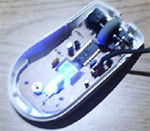 Having a blue mouse will probably not get you very far besides knowing that you did something and you did it right. You may crush some egos at your next LAN party or make that tech girl next door want to jump you. Either way, this is a easy mod that will make all your friends green with envy.
Having a blue mouse will probably not get you very far besides knowing that you did something and you did it right. You may crush some egos at your next LAN party or make that tech girl next door want to jump you. Either way, this is a easy mod that will make all your friends green with envy.
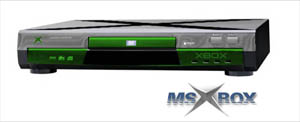
 Het multifunctionele Personal Handyphone System werkt binnenshuis als een reguliere draadloze telefoon en buitenshuis als een GSM. De telefoontjes kunnen niet alleen stemcommunicatie, maar ook faxberichten en videobeelden aan en werden ontworpen om aangesloten te worden op PDA's en notebooks. Initieel haalden de toestellen snelheden van 32 Kbps, maar eind 1998 werd dat in sommige gebieden opgevoerd tot 64 Kbps.
Het multifunctionele Personal Handyphone System werkt binnenshuis als een reguliere draadloze telefoon en buitenshuis als een GSM. De telefoontjes kunnen niet alleen stemcommunicatie, maar ook faxberichten en videobeelden aan en werden ontworpen om aangesloten te worden op PDA's en notebooks. Initieel haalden de toestellen snelheden van 32 Kbps, maar eind 1998 werd dat in sommige gebieden opgevoerd tot 64 Kbps.
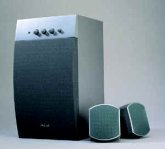 Pros
Pros
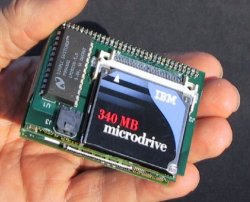
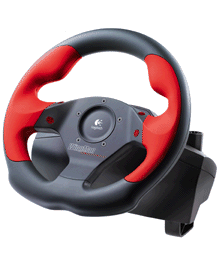



 According to Intel, the EPIC architecture was designed with about 25 years of headroom for future development in mind. The first Itanium-family processor, originally codenamed Merced, has been delayed but looks like it should hit in the first half of 2001. McKinley will follow the original Itanium and will integrate its L3 cache onto the CPU die. McKinley will arrive in the first half of 2002. Madison may also arrive in 2002 on a .13-micron process. Deerfield will arrive not long after, also on a .13 process, at a lower price and performance level but with more performance for the dollar than Madison.
According to Intel, the EPIC architecture was designed with about 25 years of headroom for future development in mind. The first Itanium-family processor, originally codenamed Merced, has been delayed but looks like it should hit in the first half of 2001. McKinley will follow the original Itanium and will integrate its L3 cache onto the CPU die. McKinley will arrive in the first half of 2002. Madison may also arrive in 2002 on a .13-micron process. Deerfield will arrive not long after, also on a .13 process, at a lower price and performance level but with more performance for the dollar than Madison.